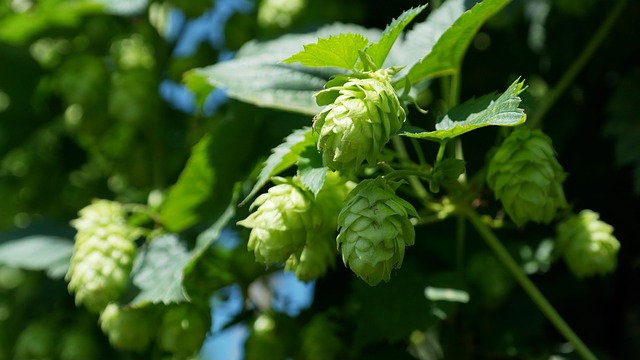Since Florida’s famed citrus industry has taken a hit from a mysterious bacterial disease, some farmers are now eyeing other crops to cultivate. On top of the list are hops, which is behind the state’s growing beer-brewing culture, the Washington Post reports.
Hops are vines with pungent flowers that people have used for centuries as the foundation for beer’s trademark flavor and aroma. The acids in the plants produce the bitterness in the brew, and its oils give either a floral or citrusy scent to beer, depending on the hops variety.
The Sunshine State was originally deemed too hot and humid for hops. Most of the plants are grown in Germany – no surprise there – and other colder European countries. In the USA, 95% of hops come from Washington and other states in the Pacific Northwest. Since craft breweries have become a burgeoning niche, demand for hops has rocketed, causing a shortage of popular hop species in smaller breweries that have to compete with larger ones for the same supply.
Horticulturist of the University of Florida Brian Pearson decided to try is hand at growing his own hops three years ago. He did some feasibility studies, and started with a few plants out in a small wood shed. His plants have since grown into hundreds of hops and has kindled a hope that Florida just might have a new cash crop. Pearson says,
The amount of phone calls from brewers wanting them, the amount of phone calls from growers wanting to grow them, has been incredibly overwhelming.
The interest in hops isn’t surprising. In 2015, Florida had an influx of craft breweries, more than any state, at a time when the $11 billion citrus industry had become crippled by a bacterial disease called citrus greening. Over the past years, the state’s citrus harvest has dropped dramatically by about 60%.
Demand for hops is on the rise across the country. In 2007, there was a shortage of aroma hops worldwide, and while production has since gone up, small breweries are finding it difficult to get the most common hops. In 2014, some 18% of brewers were unable to purchase Amarillo and Citra hops, two of the most popular varieties, according to craft brewery trade group Brewer’s Association.
Pearson was able to cultivate many hops strains on his land, the most interesting being Neo Mexicanus, a hop of Native American origin found over ten years ago on Navajo land in New Mexico. Pearson obtained some of the rare hop’s rhizomes, or seeds, and while his first year of planting them turned out terribly, the next year saw sweet, floral and citrusy hops.
To show the rest of the world that Florida could grow hops, Pearson wrote a peer-reviewed study. Farmers have been contacting him since, and one particular farmer has had luck in north-central Florida.
Joe Winiarski, who owns a small farm and brewery some 45 minutes from Pearson’s farm, is in his second year of growing hops. With help from his neighbor, he has hundreds of Cascade, Centennial, Chinook and other hops growing well. He said people expressed skepticism at first, but Winiarski wouldn’t be deterred. “You just have to be persistent. I’m a mechanical engineer by trade, so when somebody tells me I can’t do something it makes me want to do it even more.”
Brewers are very much interested, Brandon Nappy, marketing director for Gainesville-based Swamp Head Brewery says, adding that anything local is a good thing.
Whether or not hop farming in Florida will become the next profitable niche remains to be seen, but Pearson says, “Right now, I think it has high potential to at least augment some of the loss of citrus.”
























